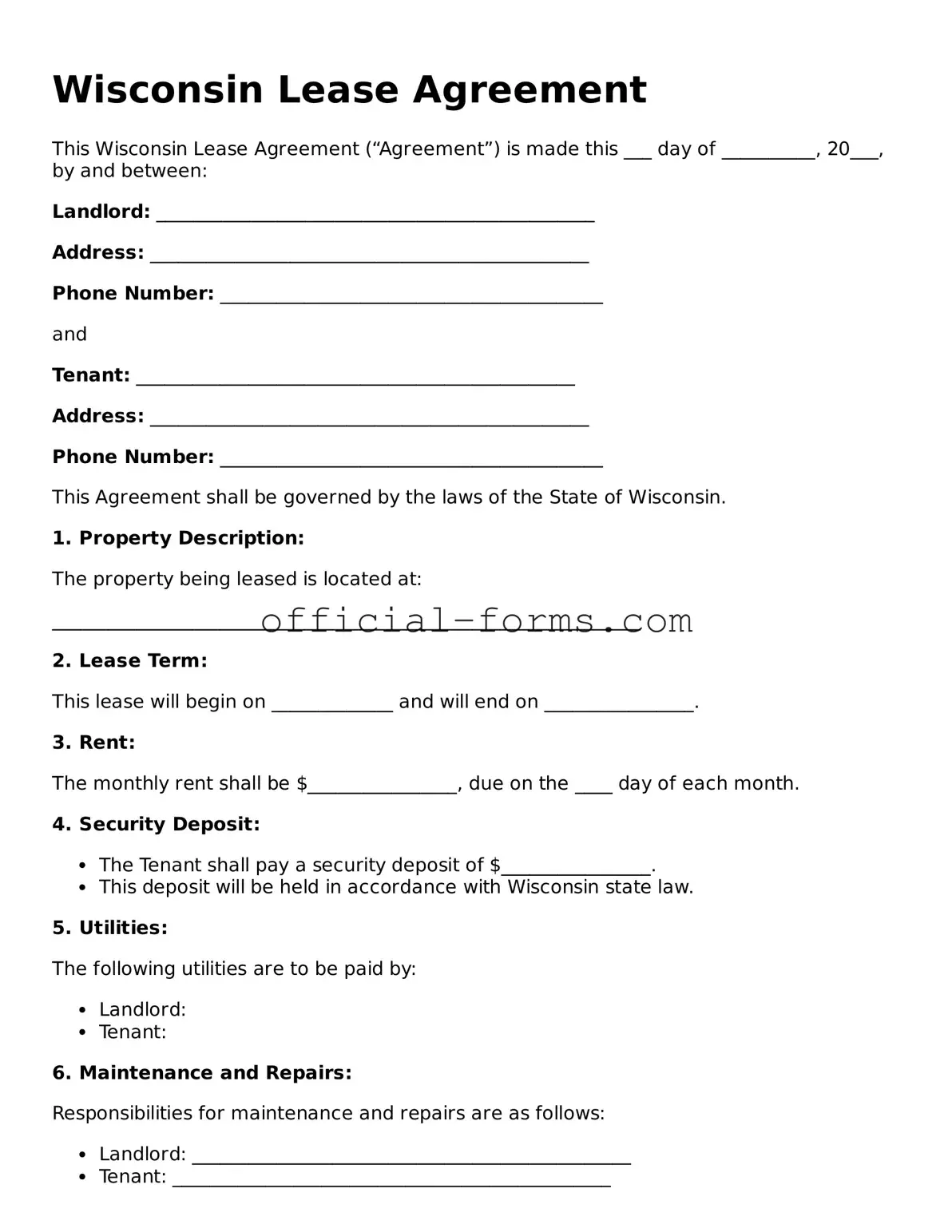Filling out the Wisconsin Lease Agreement form can be a straightforward process, but mistakes can lead to complications. One common error is failing to provide accurate tenant information. This includes names, contact details, and any additional occupants. Incomplete or incorrect information can create issues later on.
Another mistake is neglecting to include the rental property address. The lease must specify the exact location of the property being rented. Without this information, the lease may not be enforceable, leading to potential disputes.
Many people forget to clearly state the lease term. It is essential to indicate whether the lease is for a fixed term or month-to-month. This clarity helps both landlords and tenants understand their rights and responsibilities.
Incorrectly calculating the rent amount is also a frequent error. The total monthly rent should be clearly stated, and any additional fees or deposits must be outlined. Misunderstandings regarding payment can cause friction between landlords and tenants.
Some individuals overlook the security deposit section. The lease should specify the amount of the security deposit and the conditions for its return. Not addressing this can lead to disputes when the lease ends.
Failure to include maintenance responsibilities is another mistake. Both parties should understand who is responsible for repairs and maintenance. This section helps prevent misunderstandings about property upkeep.
Not addressing utilities can create confusion. The lease should clarify which utilities are included in the rent and which are the tenant's responsibility. Clear communication on this matter is vital for a smooth rental experience.
Another common oversight is neglecting to outline the rules regarding pets. If pets are allowed, the lease should specify any restrictions or additional deposits. This prevents potential conflicts and ensures both parties are on the same page.
People often forget to include the consequences of lease violations. Clearly stating the actions that may be taken in case of a breach helps protect both landlords and tenants. This section can deter potential issues down the line.
Lastly, many individuals fail to sign and date the lease. A lease is not legally binding until both parties have signed it. This simple step is crucial to ensure that the agreement is enforceable and protects the rights of both the landlord and the tenant.
